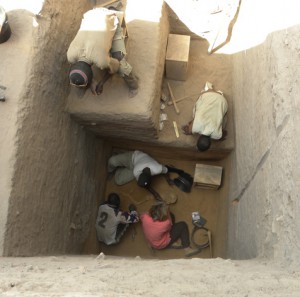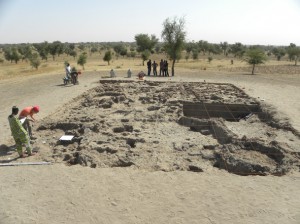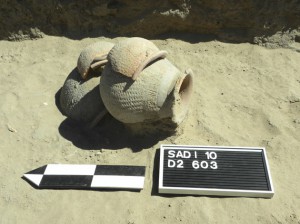The archaeological site of Sadia is a tell composed of five distinct settlement mounds, of which the two largest have a diameter of more than 90 m². Located on the Séno Plain (Dogon Country, Mali), it was discovered in 2008 during foot survey in the Guringin Valley and then excavated during two field seasons. In 2010, four test pits were dug to attempt to understand the overall occupation dynamics at the site, which contains a stratigraphic sequence of more than 5 m deep. A precise chronostratigraphic framework could thus be constructed.
In 2011, an extensive excavation of 130 m² was carried out on Mound I in order to document the final occupation phase at the site, which presented structures made of well-preserved unfired clay bricks. In 2012, continuation of the excavation was cancelled, access to Mali having become impossible for European researchers.
The chronological attribution of the site, ranging from the 8th to the 13th centuries AD, is based on 27 radiocarbon dates. The total duration of occupation is relatively short, between 300 and 470 years, with rapid sediment deposition: one meter of deposits corresponds to around 100 years.
Abundant ceramic material was recovered at Sadia. Analysis is currently the subject of a PhD dissertation in progress at the University of Geneva (C. Jeanbourquin). The other artifacts mainly include terracotta objects, sandstone grinding materials, knapped and polished quartz and chalcedony tools, iron objects and metallurgical waste. A few objects of copper alloy, bone, shell and glass paste were also discovered.
Research at Sadia sheds new light on the end of the pre-Dogon period in the southwestern part of the Séno Plain. The results obtained also enable us to position this settlement in the more general context of the thousands of tells occupied during the Iron Age in West Africa.



